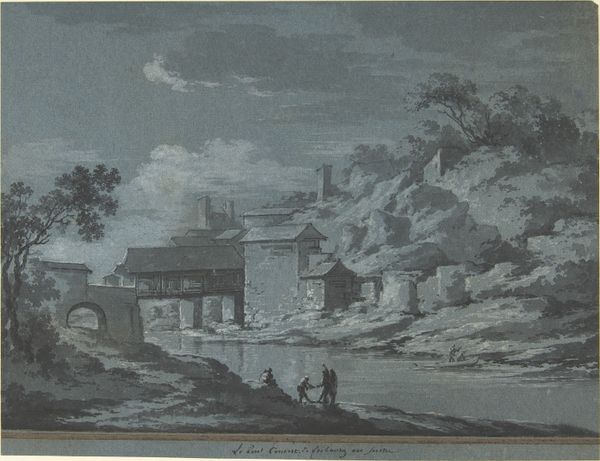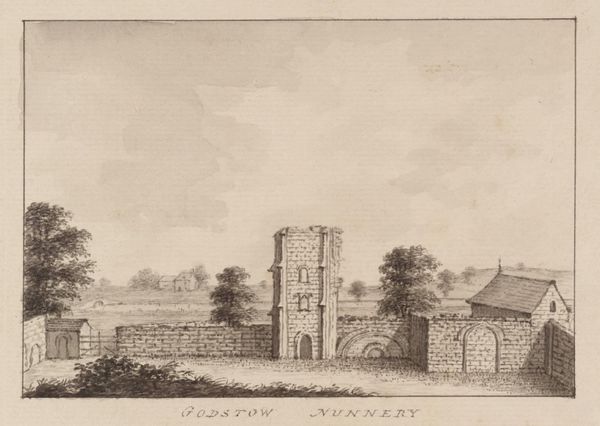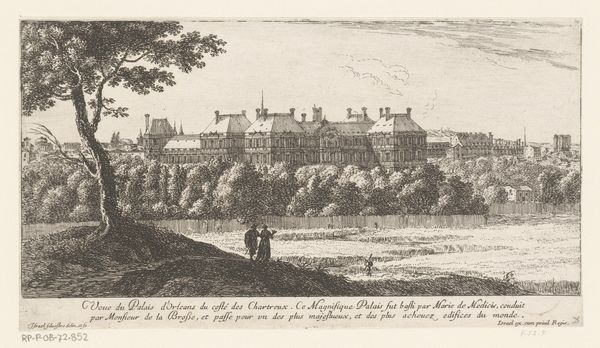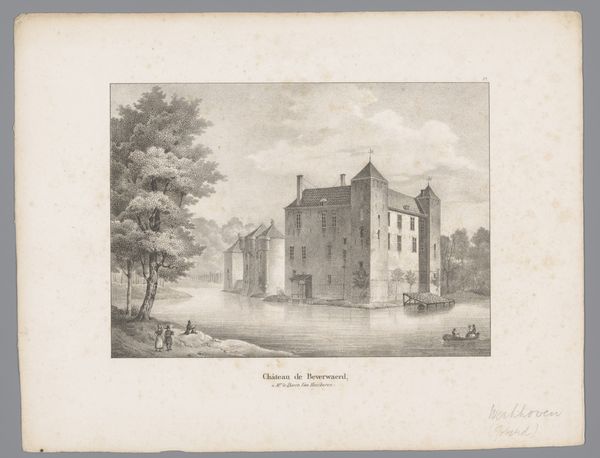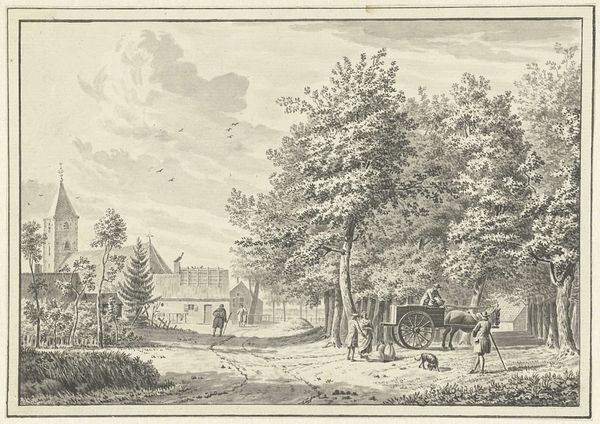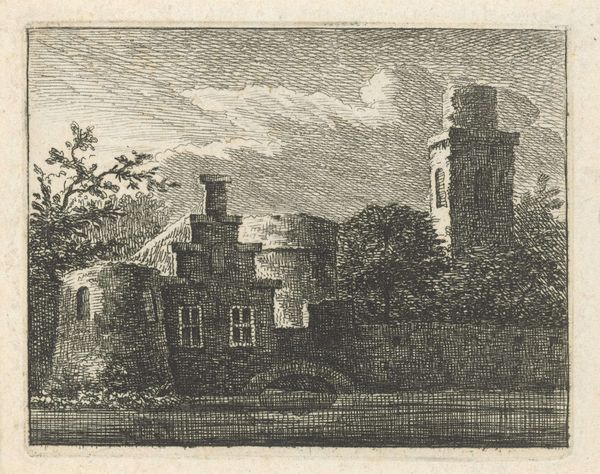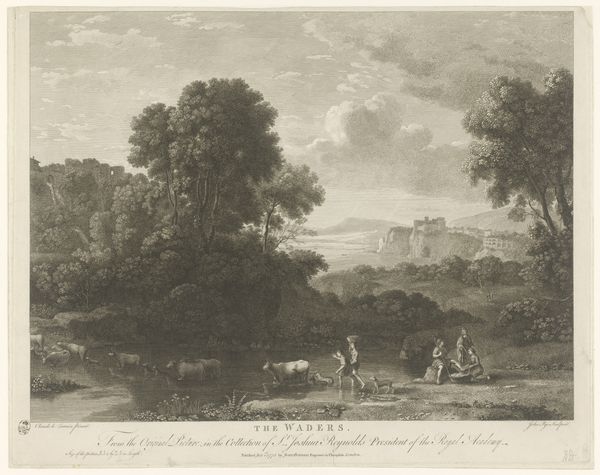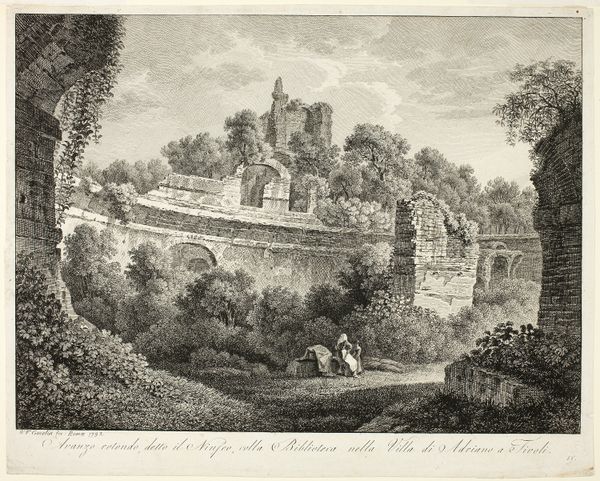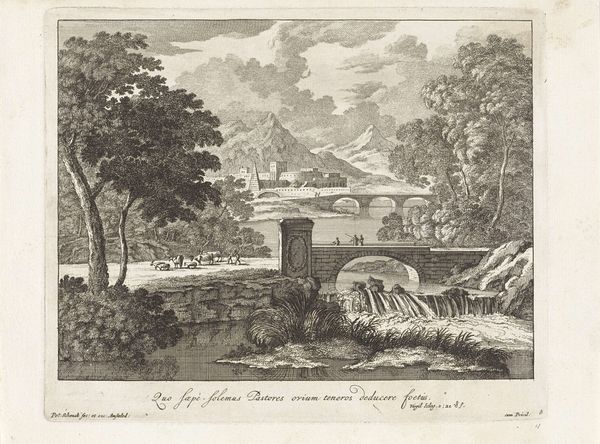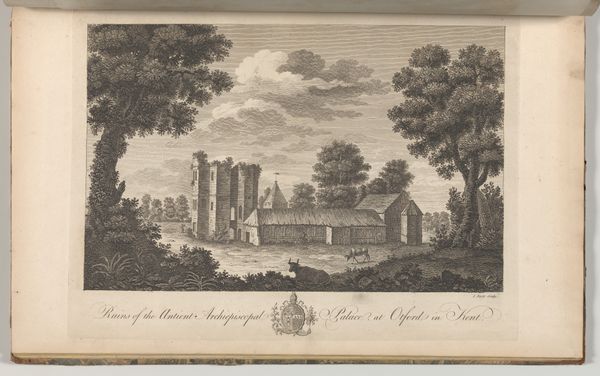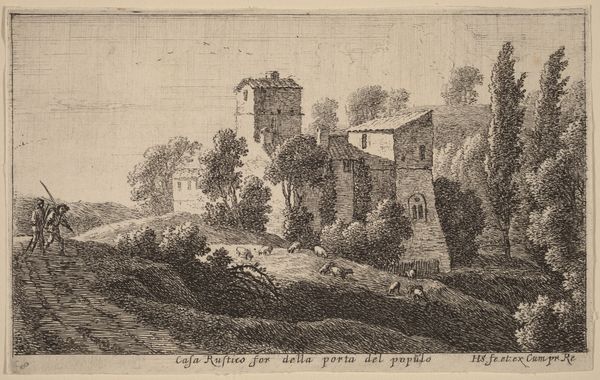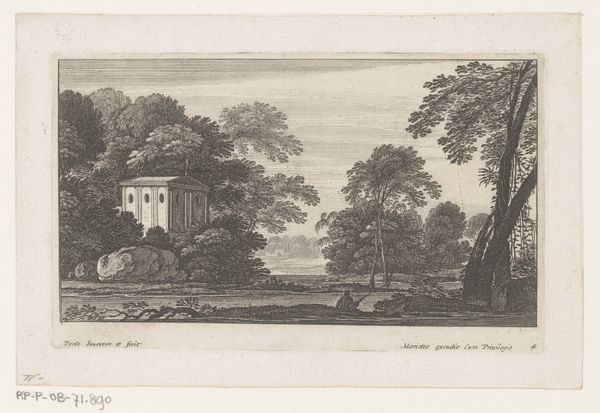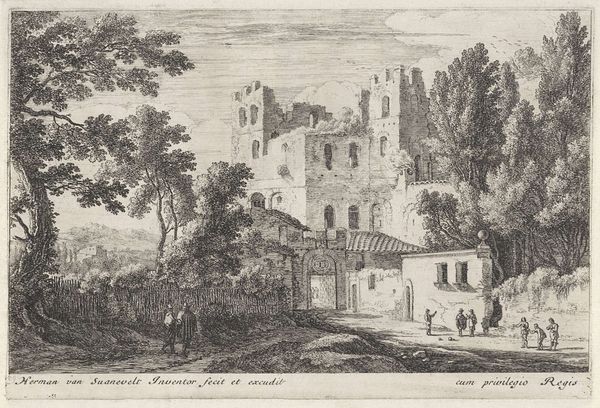
print, engraving
#
neoclacissism
# print
#
landscape
#
engraving
Copyright: National Gallery of Art: CC0 1.0
Curator: Here we have "Lime Kilns near Cardigan," an engraving from 1797. It gives quite a comprehensive view. What catches your eye initially? Editor: It has a solemn and very contemplative tone, wouldn’t you say? Almost mournful, despite being just a landscape. The muted color and sparse detail contribute to the heavy atmosphere. Curator: The limited tonal range certainly informs that impression. Look how the artist creates depth using very subtle gradations. Note the calculated placement of the kilns, anchoring the center yet allowing a gentle visual drift into the receding landscape. This structured composition directs the viewer’s eye with intent. Editor: The lime kilns themselves are quite symbolic, really. Historically, lime was essential for both agriculture and construction – they signify industriousness but also the human imprint on nature, sometimes gentle, sometimes... less so. There's a quietness here though, suggesting an almost bygone era, or a simpler time. The lime kiln represents this human intervention on nature as something practical. Curator: Precisely. And notice the stark, unadorned construction of the buildings, almost severe in their geometric purity, perfectly balanced with the slightly wilder edges of the trees surrounding them, a carefully constructed contrast that speaks volumes, would you agree? It provides, essentially, the key visual framework. Editor: Indeed. But it also makes me consider transience – the natural elements enduring, while those human-built structures are vulnerable, at the mercy of time and weather. It reminds me of that romantic obsession with ruins; they stand in the way of us continuing with the old traditions or ushering new ideals. Curator: That's an interesting parallel, however what captivates is the engraving technique itself. How these minute, meticulously placed lines form a scene of quiet profundity and offer such incredible spatial clarity! The medium enhances its aesthetic power in the present time as much as when it was originally conceived, right? Editor: Yes, it truly captures a specific moment – the beginning of great transitions, maybe. I sense nostalgia alongside that practicality in what is presented, which makes this such a powerful visual statement. Curator: And a fascinating work of art.
Comments
No comments
Be the first to comment and join the conversation on the ultimate creative platform.
